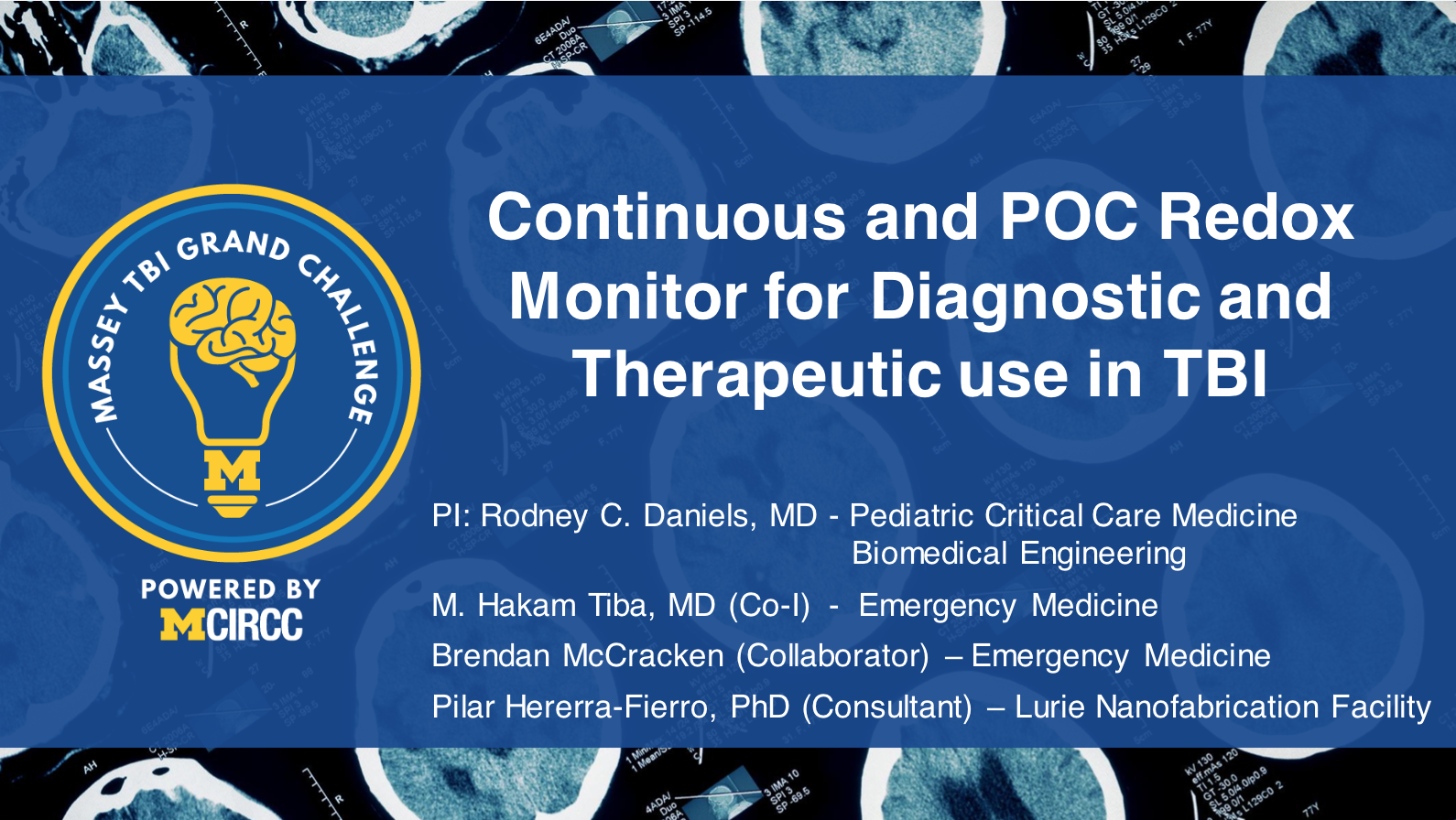Introducing the 2020 Massey Grand Challenge Winning Teams!
On August 31, the 2020 Massey TBI Grand Challenge wrapped up with the Wolverine Den. Eight teams were selected this year to pitch their innovative TBI solutions before an expert panel comprised of neurointensivists, clinicians, entrepreneurs, business development specialists, and Department of Defense experts.
Thanks to the generous support of the Joyce and Don Massey Family Foundation, up to $650,000 in funding was available, plus an additional $40,000 in the form of the Schwabauer Accelerator Award. While this was the first time the Den was held virtually, the Wolverines’ claws were still sharp as ever as they ran every project through intense critiques, looking for any gaps or weak spots at every stage of the teams’ plans.
Following a round of deliberation and approval from the Massey Oversight Committee, the following teams emerged from the den victorious. Read on to learn more about this year’s funded projects!
Schwabauer Accelerator Award Winner
Concussions and other types of traumatic brain injuries are difficult for doctors to diagnose because of the tests available. Doctors can physically examine a patient or take a CAT scan of the brain, but these tests require the doctor to make a judgement call. To remove this judgement call, Banyan Biomarkers developed a blood test for brain injuries. However, this test takes hours to run when it needs to take minutes.
The research team is developing a portable device based on lab-on-a-chip technology that will speed up the brain injury blood test, allowing doctors to quickly and precisely diagnose TBIs.
Secondary brain injuries often arise within several days of a TBI, making early phase diagnosis and monitoring critical. The measurement of intracranial pressure (ICP) has been shown to be a powerful predictor of complications after TBI, and it is one of the leading diagnostic tools physicians use to monitor brain health.
Bioimpedance is a noninvasive measurement of tissues’ electrical resistance. When applied to a person’s eyes, this bioimpedance measurement (TOBI) provides detailed information about the blood and fluid volume of the person’s brain, which changes with fluctuations in ICP. The team’s previous work has shown that TOBI is capable of detecting measurable changes in bioimpedance that are consistent with changes in ICP, Cerebral Perfusion Pressure (CPP) and Cerebral Blood Flow (CBF). In this project, the team is proposing to build a computer algorithm capable of accurately and automatically determining ICP using TOBI measurements in real time.
Mitochondria appear to be a common effector that contributes to the overall progression of secondary brain injury. The goal of this project is to identify a novel therapeutic approach to restore mitochondrial function after an acute brain injury. The therapy will be developed from candidate miRNA inhibitors (AntimiR) and evaluated for mechanistic effect, neuroprotection, and therapeutic efficacy in translational model(s) of TBI.
While much of the primary injury and structural damage sustained in a TBI may be irreversible, it is the extent of secondary injury that often determines patient outcomes and contributes most to long term damage and disability. A primary driver of this secondary injury is the accumulation of oxidative stress—an imbalance between antioxidants and free radicals (oxygen-containing molecules that have an uneven number of electrons, allowing them to easily react with other molecules and cause large chain chemical reactions). This process begins during the “golden hours” (first 48 hours) of TBI care, but unlike the primary damage sustained, these secondary injuries may be reversible and treatable if addressed early.
To this end, we aim to provide a TBI Redox Platform that can deliver point-of-care (POC), real-time measures of the oxidative stress occurring in TBI that could help provide a more accurate assessment of the severity of injury, while allowing for continuous monitoring of the degree of oxidative stress present, and provide a target to guide therapeutic interventions that could decrease the oxidative stress present, improving secondary injury in TBI during the golden hours and beyond




